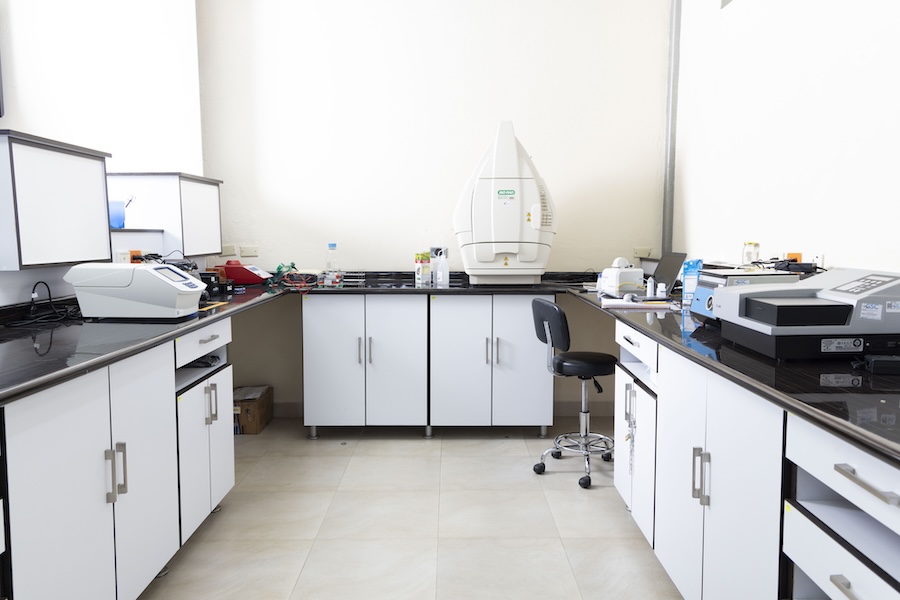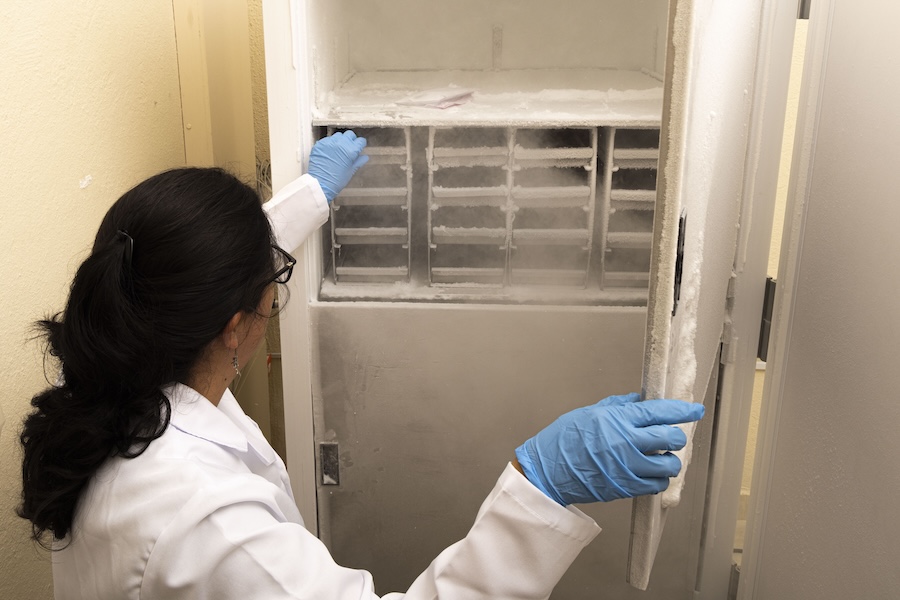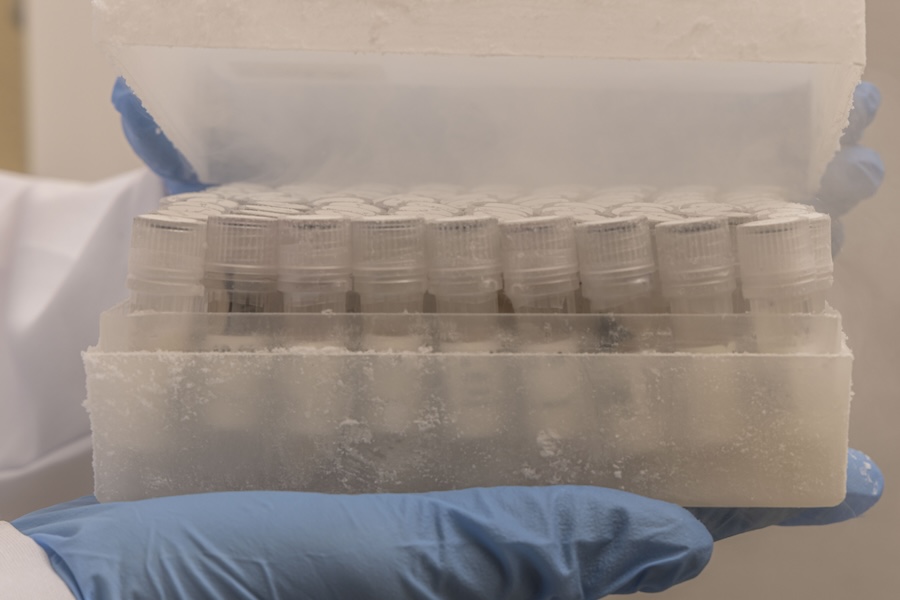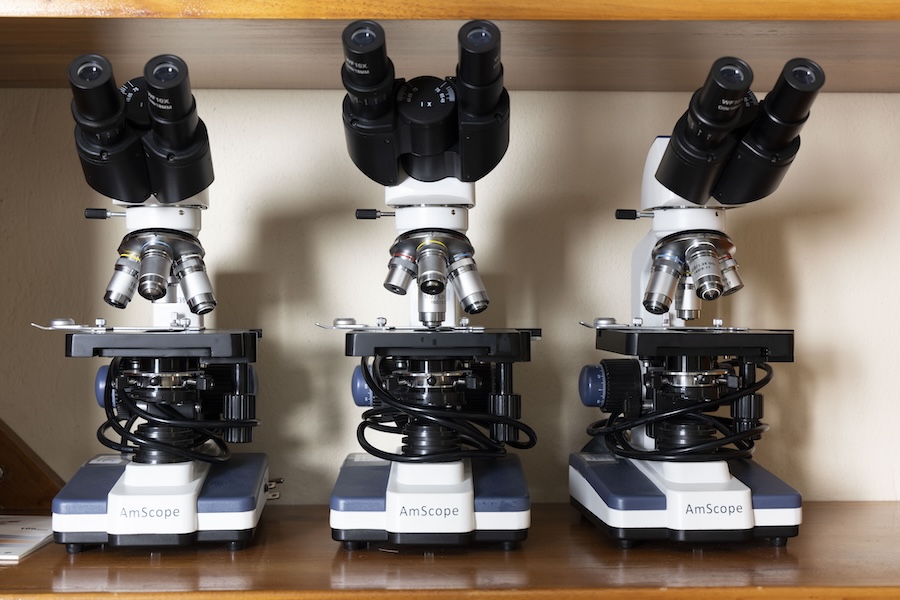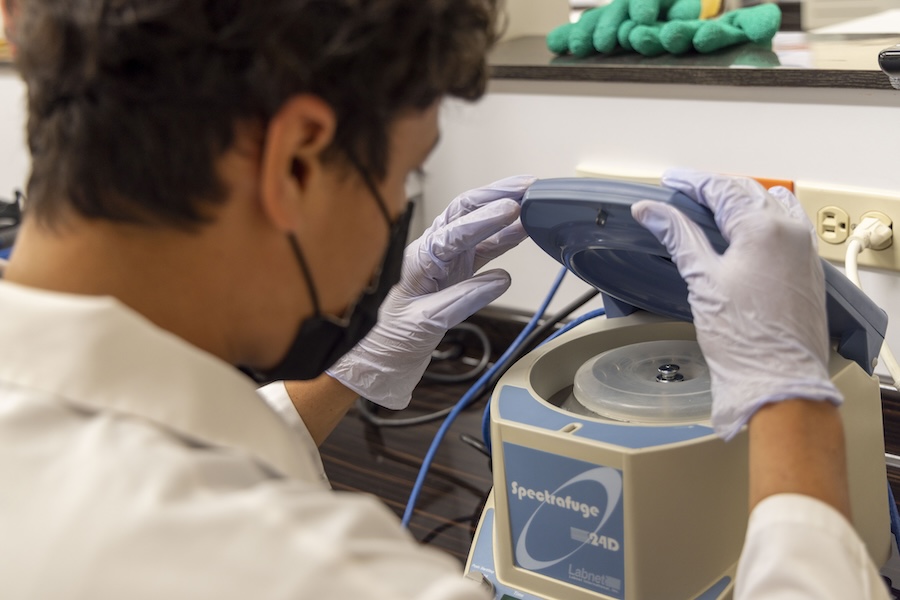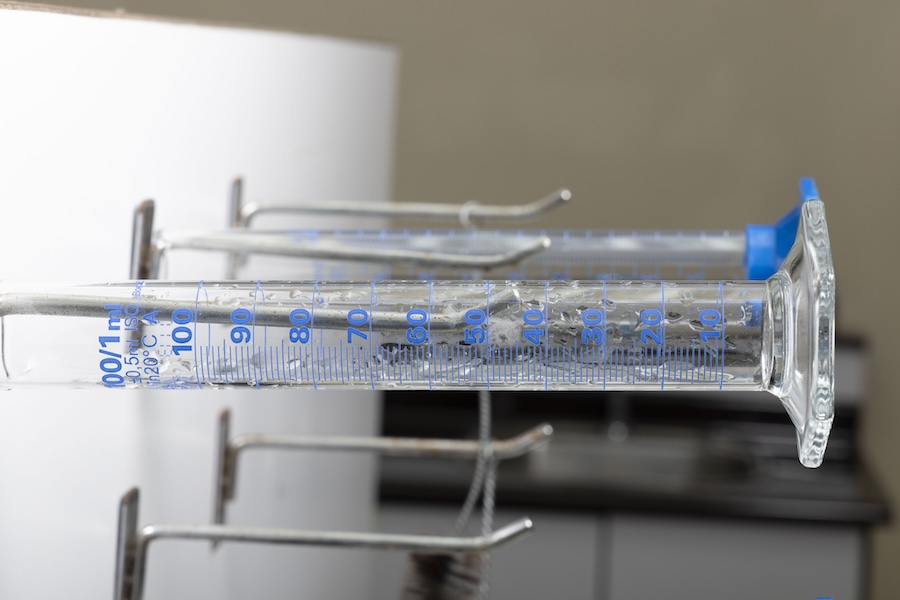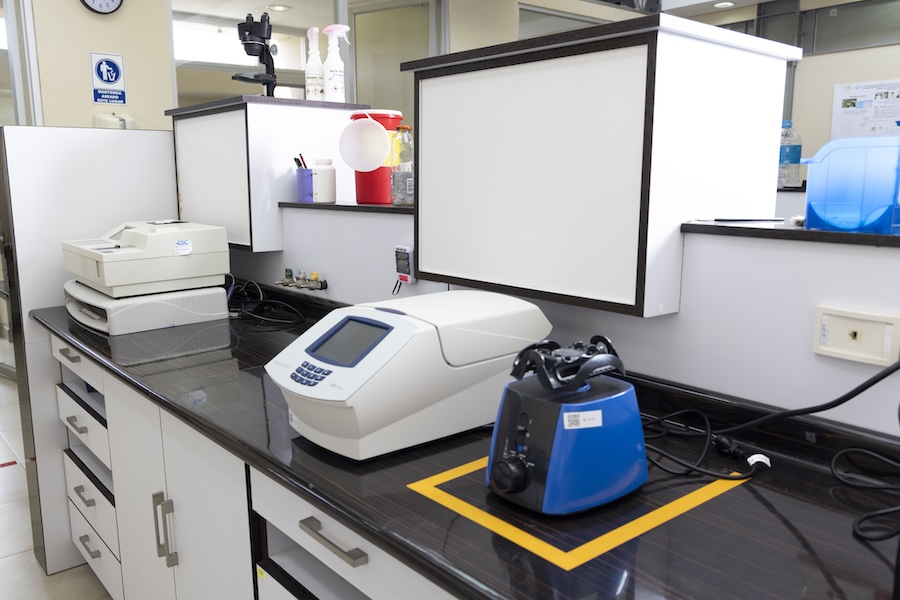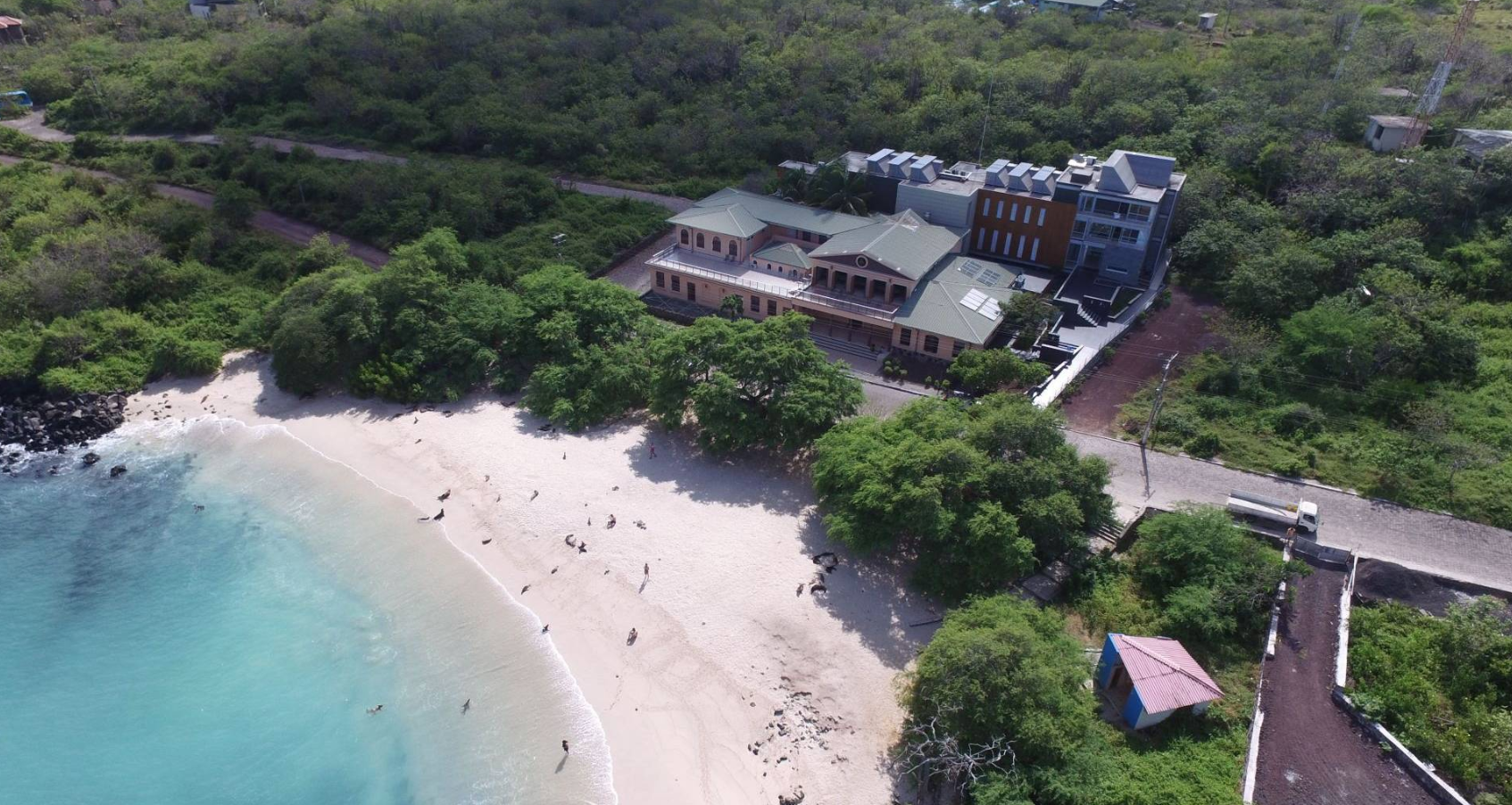
MICROBIOLOGY AND MOLECULAR BIOLOGY LABORATORY
The Microbiology and Biomolecular Lab provides the equipment researchers need to work with different biological samples for clinical, microbiological, and genetic studies.
Researchers can isolate microorganisms such as fungi and bacteria; process blood, feces and urine samples; and extract DNA or RNA from samples – whatever is needed for research or health purposes.
This lab also supports the Galapagos National Park by conducting health assessments of giant tortoises to help safely release this iconic species back into the wild and save them from the brink of extinction.
Assessment of the health status of the giant tortoises of the Cerro Colorado Galapaguera, prior to the release and repatriation processes
Lead this project Dr. Greg Lewbart (NC State University), Juan Pablo Muñoz and Diego Páez Rosas (USFQ Proffesors). This team collaborates with the La Galapaguera, which is the Galapagos National Park (GNP) tortoise breeding center in San Cristobal Island. Each year La Galapaguera has to release tortoises between 8 to 10 years old to the wild with the objective to increase the number of giant tortoises on the island. The GSC has been helping the GNP with this important activity each year since 2016. During the health assessments, they take baseline measurements and blood samples to know if tortoises are healthy so they are prepared to survive in the wild.
Introgression and hybridization between endemic and invasive plants in the Galapagos Islands
Dr. Todd Vision (UNC) is leading this project and, the main objective is to study five genders (Psidium, Lantana, Passiflora, Gossypium, and Pennisetum) of invasive and endemic plant populations that live together in the same area to demonstrate hybridization. This project uses genetics and molecular biologic techniques to show how native species came to the island, become endemic, and how they can hybrid with native species affecting their evolution and with it changing the flora and environment of the island.
Phytogeography and origin of native and introduced species in the Galapagos Islands
Dr. Jaime Chavez conducts this project that explores evolution patterns in less studied species in the Galapagos Islands using molecular biology techniques. There is not much information about many species on the island such as worms, which are part of the food chain and are important to maintaining environment stability.
Molecular characterization of pathogenic fungal as a biological control strategy for invasive blackberry (Rubus niveus) in the Galapagos Islands
Dr. Antonio León (USFQ) is leading this project. Blackberry (Rubus niveus) is one of the most aggressive and invasive species in the Galapagos Islands. Using microbiology and molecular biology techniques, researchers isolate pathogenic fungal from blackberry plants to characterize them. They then test if they can kill the blackberry plants while protecting the endemic plants, using them as a biological control strategy for the future.
The Microbiology and Biomolecular Lab is equipped with the following:
- Incubator (20 to 50 degrees C)
- Quantity tray sealer
- Analytical balance
- Microwave
- Sand bath (regulates incubation of
samples up to 40 degrees C) - Micropipettes
- Electrophoresis chamber and power supply
- Vacuum pump
- Gel documentation system BIO-RAD
- NanoDrop 2000
- Qubit Fluorimeter
- Microplate reader ELX808
- Centrifuge
- DNA carry over blocking cabinet
- Water bath GEMMY
- Vortex-Genie
- Biological safety cabinet IIAZ
- Thermal Cycler Biometra
- pH Metter Toledo
- Tissue homogenizer
- Compound microscope
- Fume hood
- Vet Test 8008 IDEXX
- Block heater (incubates samples for DNA and RNA extraction from 5 to 130 degrees C)
- Mini bead beater
The Microbiology and Biomolecular Lab is equipped with the following:
- Incubator (20 to 50 degrees C)
- Quantity tray sealer
- Analytical balance
- Microwave
- Sand bath (regulates incubation of
samples up to 40 degrees C) - Micropipettes
- Electrophoresis chamber and power supply
- Vacuum pump
- Gel documentation system BIO-RAD
- NanoDrop 2000
- Qubit Fluorimeter
- Microplate reader ELX808
- Centrifuge
- Mini bead beater
- DNA carry over blocking cabinet
- Water bath GEMMY
- Vortex-Genie
- Biological safety cabinet IIAZ
- Thermal Cycler Biometra
- pH Metter Toledo
- Tissue homogenizer
- Compound microscope
- Fume hood
- Vet Test 8008 IDEXX
- Block heater (incubates samples for DNA and RNA extraction from 5 to 130 degrees C)
